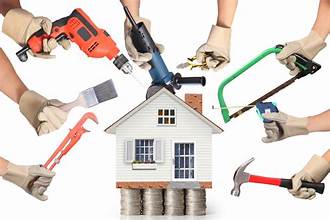In the realm of modern living, the concept of a home extends far beyond mere shelter. It embodies a sanctuary, a space where comfort, functionality, and aesthetics converge to reflect the unique identity of its inhabitants. Consequently, the demand for home services, remodeling, and construction has witnessed a profound evolution, driven by technological advancements, shifting consumer preferences, and a growing emphasis on sustainability. In this article, we delve into the transformative journey of these industries and explore the trends shaping the future of residential spaces.

Home services encompass a broad spectrum of offerings designed to enhance the quality of life within the home environment. From routine maintenance tasks to specialized installations, the scope of services available today is vast and diverse. One of the most notable developments in this field is the rise of digital platforms connecting homeowners with service providers seamlessly. These platforms leverage the power of technology to streamline the process of finding, booking, and paying for various services, revolutionizing the way people manage their homes.
Remodeling, on the other hand, represents a creative endeavor aimed at revitalizing existing spaces to better suit the needs and preferences of homeowners. While the desire to remodel one’s home is nothing new, the methods and approaches employed in the process have evolved significantly over time. Today, sustainability is a driving force behind many remodeling projects, with homeowners increasingly opting for eco-friendly materials and energy-efficient solutions. Additionally, the integration of smart home technology has become a prominent trend, allowing for greater control and customization of the living environment. A company that utilizes that well is Phoenix Granite Countertop Company
Construction, as the foundation of residential development, plays a pivotal role in shaping the built environment. The traditional methods of construction are being challenged by innovative techniques and materials aimed at enhancing efficiency and sustainability. Prefabrication, for instance, has emerged as a cost-effective and time-saving alternative to conventional building practices, allowing for faster project completion without compromising quality. Moreover, the growing emphasis on green building practices has led to the widespread adoption of sustainable construction methods, including the use of renewable energy sources, recycled materials, and passive design principles.
One of the key drivers of change in the home services, remodeling, and construction industries is the growing influence of technology. From virtual reality simulations that allow homeowners to visualize their remodeling projects before they commence to drones that survey construction sites with unparalleled precision, technology is reshaping every aspect of the residential environment. Augmented reality applications enable customers to try out different paint colors or furniture arrangements without ever lifting a brush, while artificial intelligence algorithms analyze vast amounts of data to optimize energy usage and improve building performance.
Moreover, the rise of the sharing economy has given birth to a new wave of collaborative platforms that facilitate peer-to-peer exchanges of skills and resources. Crowdfunding platforms, for example, empower communities to come together and fund collective housing projects, bypassing traditional financing models and promoting greater social cohesion. Similarly, co-living spaces offer an alternative to traditional homeownership, providing affordable housing solutions for individuals seeking a sense of community and shared responsibility.
Another significant trend shaping the future of home services, remodeling, and construction is the growing focus on wellness and well-being. As awareness of the impact of the built environment on physical and mental health continues to grow, homeowners are increasingly prioritizing features that promote a sense of balance and harmony within their living spaces. Biophilic design principles, which seek to reconnect humans with nature through the integration of natural elements such as plants, daylight, and natural materials, are gaining traction as a means of enhancing indoor environmental quality and fostering a greater sense of well-being.
In conclusion, the landscape of home services, remodeling, and construction is undergoing a profound transformation driven by technological innovation, shifting consumer preferences, and a growing emphasis on sustainability and well-being. As we look to the future, it is clear that the residential environment will continue to evolve, offering new opportunities for creativity, collaboration, and connection. By embracing these trends and harnessing the power of technology, we can create homes that not only meet our needs but also enrich our lives in ways we never thought possible.
…
